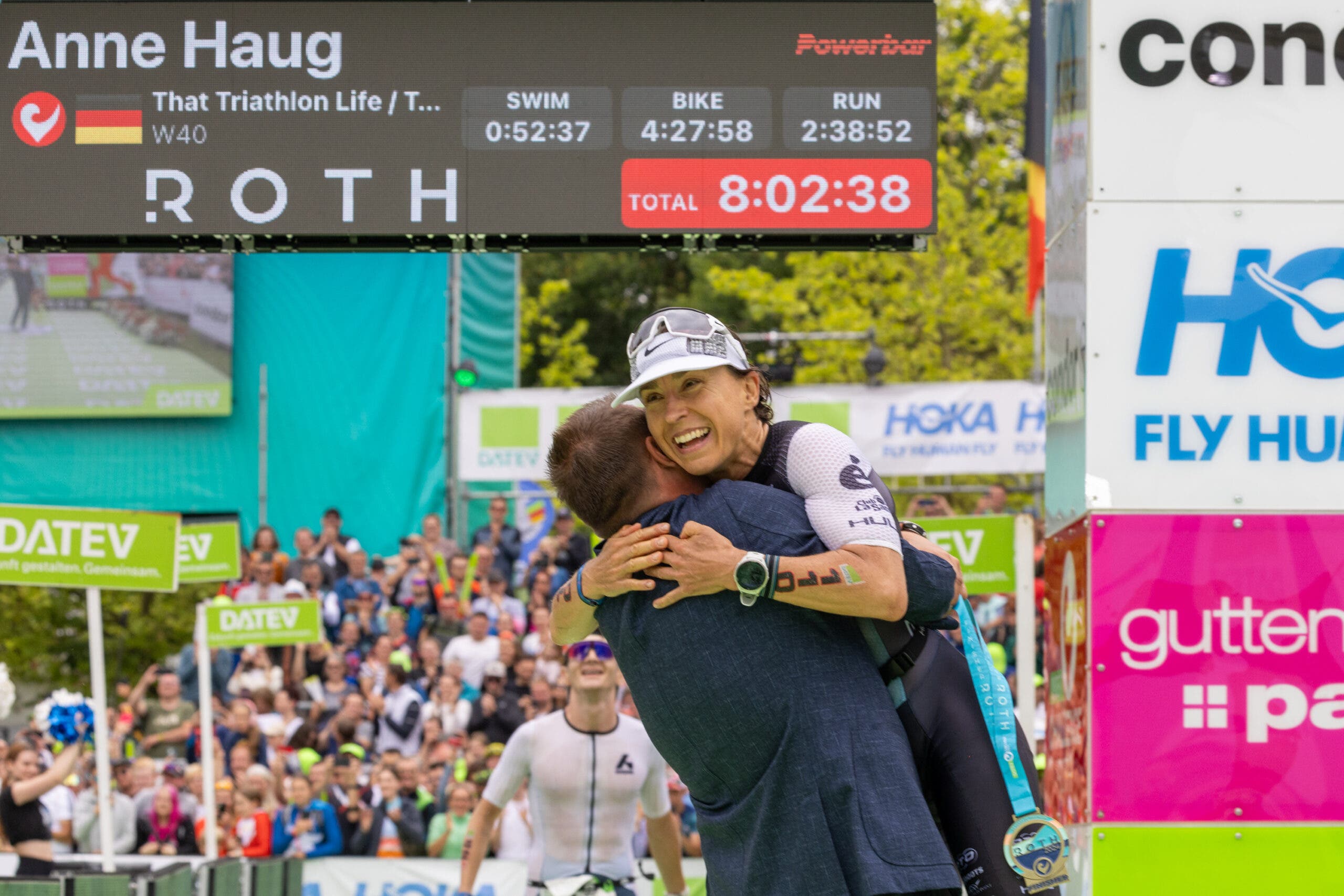What is the Ironman World Record? It's Complicated

Ironman World Records
In 2022, Kristian Blummenfelt and Kat Matthews covered the 140.6-mile Ironman distance in what would have been record-setting times of 6:44:25 and 7:31:54 – except that they did it in a unique set-up involving pacers, extra equipment, and no holds barred as part of the Sub7/Sub8 Project. Because of that unique setup, the time does not count as an actual Ironman world record. So what is the fastest Ironman time? The answer isn’t so straightforward.
Blummenfelt’s draft-legal 48:21 swim, 3:24:22 bike, and 2:30:50 run at the Sub7 stunt came on the heels of the Olympic champ’s “official” Ironman world record performance at his Ironman debut in Cozumel of 7:21:12—with a 39:41 swim, 4:02:40 bike, and a 2:35:24 run. Wait, you’re thinking (among other things): “Drafting is worth almost 40 minutes? He swam how fast in Cozumel? Is any of this right?!” The performances prompted much speculation online about current-aided swims versus pack-aided bike rides; what constitutes an Ironman world record, Ironman best, or Ironman course record; and how exactly these records are measured. How does any of this stack up to previous Ironman world bests? And what about non-Ironman-branded races, like Challenge Roth?
So first things first: There is no such official thing as an Ironman world record—not that that stops people from keeping unofficial records. And, yes, Blummenfelt’s 7:21 in Cozumel is the unofficial fastest-known Ironman time—so for most intents and purposes, it’s an Ironman world record. No one is really considering the Sub7/8 times as records in any sense—other than being entertaining fun – and there are faster times recorded at races that are the same distance (140.6 miles) but that are not Ironman-branded races.
So, what does this all mean for the record books?
How Ironman world records work
In running, official world records have to meet certain criteria, including course certification, requirements around how many athletes must be in the event, drug testing, and even whether women are racing alone or if it’s a co-ed event. These record-setting standards do not exist in triathlon. And while course distances are confirmed in high-level World Triathlon racing (i.e., the Olympics—though even at the Rio Games, the bike course was stated to be short), there is no course certification for long-course or for regular age-group races of any distance. It’s approximately 70.3 or 140.6 miles, but who’s really checking?
Ironman officials confirmed that they do not keep official world or course records for these reasons—because of variations in courses from year-to-year and from course-to-course, and because of the lack of official course certifications.
“Due to variance of courses (even from year-to-year the same race could have course alterations), combined with the fact that unlike marathons, triathlon does not have official course certification for records, we use world best, course best, race best, swim/bike/run course best, etc.,” said an Ironman spokesperson.
For what it’s worth, the Guinness World Records recognizes the “fastest time to complete an Ironman triathlon,” the Ironman World Championship fastest time, and a whole host of other triathlon-related things, like the fastest time to complete an Ironman blindfolded or the most siblings to complete an Ironman or the largest international distance triathlon race (the answer, for all you trivia buffs, is the Nation’s Triathlon in 2010).
OK, but what are the fastest Ironman times?

Sure, sure, you’re thinking, there’s not an official Ironman world record, but there are still times that everyone knows are the fastest—and isn’t that basically just as good?
The Sub7/Sub8 project modeled itself off the Breaking2 marathon spectacle and answered the question of just how fast a man and a woman could go if you allowed a whole team to back them. Does that then meet the standards of a record? (No. The answer is no.)
In a much simpler vein, there are also courses that are simply known to be fast—Ironman Brazil, Bahrain 70.3—and those that are known to not be fast – Kona, for instance. Ironman Cozumel 2021 had notably fast swim times with a heavy current, leading to Blummenfelt’s 39-minute split for 2.4 miles. For what it’s worth, second-place Ruedi Wild came out of the water with Blummenfelt, and finished in a time (7:36:35) that would have also broken the existing “unofficial” Ironman world record. And the women’s winner, Sara Svensk, also set a new Ironman-brand world record that day. The Cozumel course, it appears, was fast–whatever the reason.
Then, there are the issues around when a course gets shortened or modified. In 2018, Ironman said they would recognize the times set at Ironman Texas as “world’s best” and “course best” times despite the bike course being shortened, leading to much debate. They had initially said that course record times set would come with an asterisk. Both the previous world’s fastest Ironman-brand times were set there by Matt Hanson (7:39:25) and Melissa Hauschildt (8:31:05).
But there are also races that are not Ironman-branded, but cover the same 140.6-mile distance. Challenge Roth is perhaps the most famous of these, and it is there that we see what are considered to be the fastest iron-distance times overall, both set in 2024. Anne Haug’s 8:02:38 is indisputably a world record, with no other woman (in an Ironman-branded race or otherwise) besting that time to date. And while Magnus Ditlev’s 7:23:24 is not faster than Blummenfelt’s Cozumel time on paper, but it does starts to look not-so-dissimilar from a 7:21 with an exceptionally fast swim, making a strong case for why course-to-course comparisons are key in triathlon record discussions.
And we haven’t even talked about the impact of drafting in regular race settings. All of that being said, these are the fastest known world-leading times. Check out even more details on historical records broken down at TriRating.com.
Ironman and Iron-distance records
Fastest Ironman time:
| Men | 7:21:12 | Kristian Blummenfelt | Ironman Cozumel, 2021 |
| Women | 8:03:27 | Laura Philipp | Ironman Hamburg, 2025 |
Fastest iron-distance (non-Ironman brand) time:
| Men | 7:23:24 | Magnus Ditlev | Challenge Roth, 2024 |
| Women | 8:02:38 | Anne Haug | Challenge Roth, 2024 |
Fastest Ironman World Championship Kona course record:
| Men | 7:35:53 | Patrick Lange | 2024 |
| Women | 8:24:31 | Lucy Charles-Barclay | 2023 |
Fastest 70.3 time:
| Men | 3:26:06 | Marten Van Riel | 70.3 Dubai, 2022 |
| Women | 3:51:19 | Georgia Taylor-Brown | 70.3 Bahrain, 2025 |